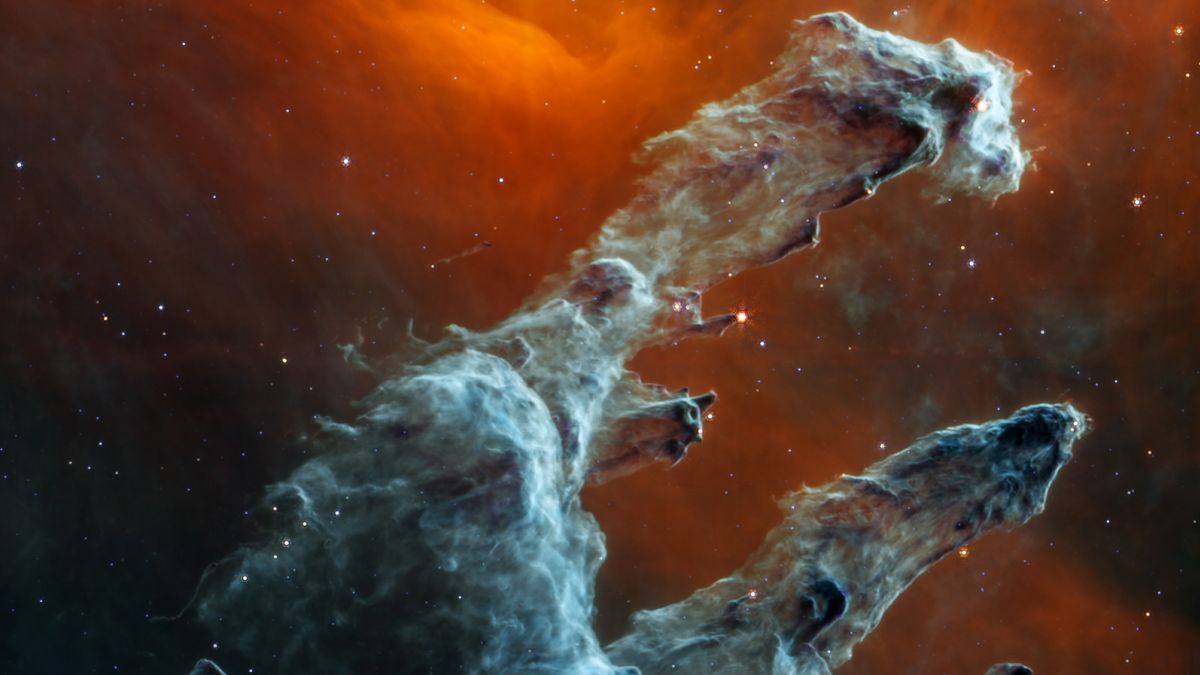(CNN) — The James Webb Space Telescope looked at the dark side of the common pillars of creation, located 6,500 light-years away in the Eagle Nebula.
Last week, the space observatory showed off a stunning infrared view of the iconic towers formed by interstellar gas and dust and glowing with young stars.
The three-dimensional structures are as massive as they look, measuring about 5 light-years across. (A light year is equal to about 6 billion kilometers).
The James Webb Space Telescope captured a new perspective on the Pillars of Creation in mid-infrared light. The dust in this star-forming region is a feature that resembles ghostly figures rather than stars. debt:
NASA/ESA/CSA/STScI
In Webb’s most recent image, which captures the iconic feature in mid-infrared light, the velvety gray dust evokes a tangle of ghostly figures darting through the cosmos. The stars are obscured by dust, but some of them pierce the darkness with red light.
This is an entirely new perspective on the first observed celestial scene Hubble Space Telescope in 1995 Back in 2014.
Infrared light is invisible to the human eye, making Webb our detective who can spy on hidden aspects of the universe. A new image taken by Webb’s Mid-Infrared Instrument, or MIRI, captures more detail about the structure of the dust and plumes.
Although thousands of stars form within the pillars and often shine as the central feature, their starlight is undetectable in mid-infrared light. In contrast, the MIRI instrument can only see younger stars that have not shed their dusty core and shine like rubies in the image. For their part, the blue stars in the scene represent primitive stars that have separated from layers of gas and dust.
The web’s mid-infrared capability picks out details in the gas and dust of the pillars and their surrounding regions. In the background of the image, regions of dense dust are depicted in gray, while a red, horizon-like region of cooler, more diffuse dust persists.
Unlike Webb’s recent images, there are no glowing background galaxies because their distant light cannot pass through them.
A mid-infrared view of the Pillars of Creation will allow researchers to better understand the process of star formation over millions of years in this stellar nursery.
Other telescopes, such as the Spitzer Space Telescope, have observed the pillars at different wavelengths. Each new look at the iconic scene reveals new features, and the detailed and precise measurement of gas, dust and stars helps us better understand this impressive region.




:quality(75)/cloudfront-us-east-1.images.arcpublishing.com/elcomercio/K5CVUF2GTJE2FIAUMNPNCBMFFQ.jpg)
